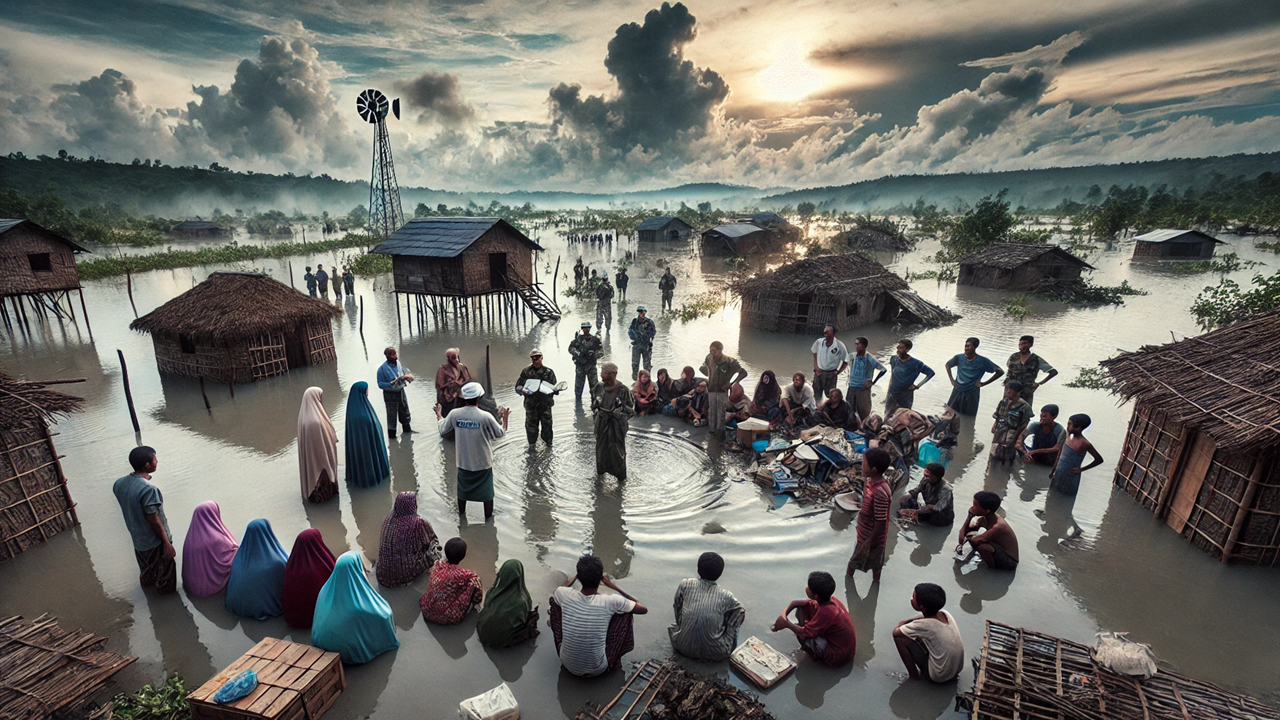One Month After Super Typhoon Yagi, Over 1.3 Million Children Face Educational Crisis in Southeast Asia
Subhead: Severe school damage, flooding, and displacement threaten children's learning and well-being as UNICEF and partners work to restore education and psychosocial support.

One month after Super Typhoon Yagi ravaged Southeast Asia, nearly 1.3 million children across Viet Nam, Myanmar, Lao PDR, and Thailand are experiencing severe setbacks to their education. Damaged schools, flooded homes, and displaced families have left thousands of schools either closed or severely impaired, depriving children of essential safe spaces for learning, nutritious meals, and critical psychosocial support.
“Schools provide essential protection and stability for children, acting as safe havens for learning and play,” said June Kunugi, UNICEF Regional Director for East Asia and the Pacific. “Missing even a few weeks of school can impact children’s education, well-being, and future opportunities, perpetuating cycles of disadvantage and inequality. Restoring learning in school settings as fast as possible is vital for reestablishing stability and ensuring children can thrive.”
Typhoon Yagi, one of the most devastating storms to hit Southeast Asia in decades, left widespread destruction in its wake. Ongoing assessments in the worst-affected areas reveal the extent of the crisis: more than 5.3 million people have been affected, including at least 1.5 million children. Continuous rains, floods, and landslides are compounding the situation, making recovery efforts more difficult.
In the aftermath, children are forced to continue their education in temporary learning spaces, many of which lack adequate facilities for proper learning. Others, especially in northern Thailand, face uncertain timelines for when they can return to school. Prolonged absence from the classroom risks significant gaps in learning, decreased academic performance, and the potential for students to fall behind or drop out of school entirely. These conditions are also exacerbating stress and anxiety for many children, making it even harder to concentrate on their studies.
In Viet Nam, the storm caused significant damage to 1,607 schools, affecting over 960,000 children who now face interrupted learning due to school closures and the loss of critical educational supplies. In Lao PDR, severe flooding has impacted 90 schools, disrupting education for over 20,000 children. These children urgently need school kits, educational materials, and furniture to ensure a smooth return to learning. Northern Thailand has seen 555 schools affected, impacting over 19,000 students, with teachers resorting to online learning and personally delivering study materials to students' homes. In Myanmar, where over 300,000 children have been directly affected, many schools have been converted into temporary shelters, adding to the difficulties children already face due to the ongoing conflict in the country.
UNICEF, in collaboration with governments and partners, is leading efforts to address the crisis. In Lao PDR, UNICEF is distributing over 1,600 school kits to Early Childhood Education and primary school students, while also establishing child-friendly spaces to support over 1,000 children with learning and psychosocial support. In Myanmar, UNICEF is providing essential teaching and learning supplies, as well as mental health and psychosocial assistance to flood-affected children. In Thailand, back-to-school kits are being distributed to 3,350 children, while more than 8,000 will receive psychological first aid. Meanwhile, in Viet Nam, UNICEF is working alongside the Ministry of Education and Training to supply learning materials to over 23,000 children, while also training health workers, teachers, and school staff in emergency preparedness and psychosocial support.
Looking forward, UNICEF is also focused on long-term resilience. By integrating disaster risk reduction and climate change adaptation into essential services for children, UNICEF aims to safeguard their well-being in a region increasingly prone to extreme weather events. These efforts include developing programs that address immediate recovery needs while preparing children and their communities for future challenges.
The rising frequency of extreme weather in East Asia and the Pacific is disrupting vital services for children, from education and healthcare to clean water access. Over the past five decades, the cumulative impact of these climate-related disasters has grown, posing both immediate threats and long-term risks to the development and well-being of children in the region. As these environmental hazards become more common, efforts to build resilience and restore services quickly are becoming ever more critical for ensuring a stable and hopeful future for Southeast Asia’s youngest and most vulnerable.
- READ MORE ON:
- Typhoon Yagi
- June Kunugi
- UNICEF










